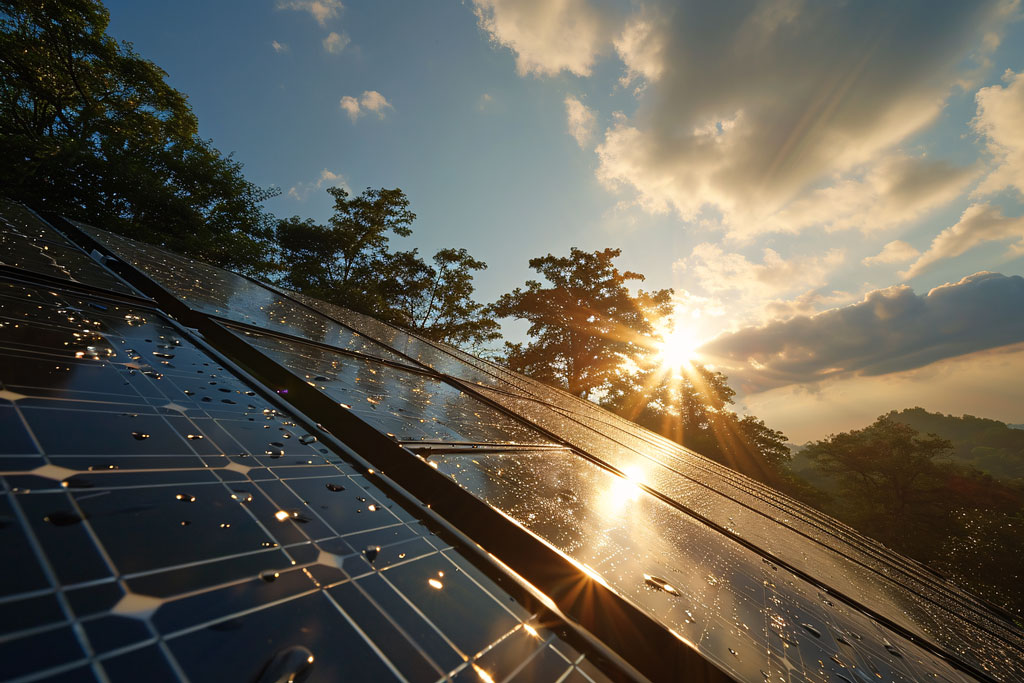
How do solar panels work?
The power of the sun
Photovoltaic cells are designed to create energy when the sun shines on them. Each cell only produces a tiny amount of energy so lots and lots of cells (each cell is only a few human hairs thick) are connected together then sandwiched in protective material such as plastic and glass to protect them from the elements. This is the solar panel that will be installed.
In more detail – Solar technologies convert sunlight into electrical energy through photovoltaic (PV) panels. This energy can be used to generate electricity or be stored in batteries.
Solar panels can be placed anywhere there is sunlight, such as open fields or rooftops. The more light the panels are exposed to throughout the day, the more electricity they can produce.
When the sun is shining, solar panels convert sunlight into DC (direct current) electricity. The solar inverter converts this electricity into AC (alternating current) power for use in your home. Your home appliances use this power instead of drawing power from the electricity grid.
Any excess electricity generated by solar panels but not used by appliances is sent back (exported) to the electricity grid or used to charge a solar battery. Electricity Retailers pay a feed-in tariff for any electricity sent back to the grid.
Solar generation, consumption and export is tracked and recorded through a smart meter, providing the data for electricity billing.
Solar systems are most effective when they are well positioned (north-facing is optimal, but not essential) and exposed to enough sunlight without obstruction by shade caused from trees, power lines or other structures.
Some of the solar energy pros are: renewable energy, reduced electric bill, energy independence, increased home resale value, long term savings, low maintenance.
Some of the cons of solar energy are: the cost of adding solar, depends on sunlight, space constraints, solar energy storage is expensive, installation can be difficult and environmental impact of manufacturing and disposing panels.
Are solar panels reliable
Most good quality panels now have a 25 to 30 year warranty and if fitted and handled correctly they are extremely dependable and reliable.
The future of solar cells
As this is a growing industry worldwide the research being caried out is extensive. Everyone is looking for a less expensive and more efficient method of solar power capture, using fewer natural resources. There is no point replacing one mining industry with another if the goal to the reduce our impact on the planet.
Solar panels currently use silicon which in expensive and requires intrusive mining to gather the large quantities required for the production of solar panels.
Perovskite solar cells
The new kid on the block is the Perovskite solar cell. The raw material used and the way they are made are both low cost. Their high absorption coefficient enables ultrathin films of around 500 nm to absorb the complete visible solar spectrum. These features combined result in the ability to create low cost, high efficiency, thin, lightweight, and flexible solar modules.
While still in the testing phase we hope they will be available for use in the near future.
